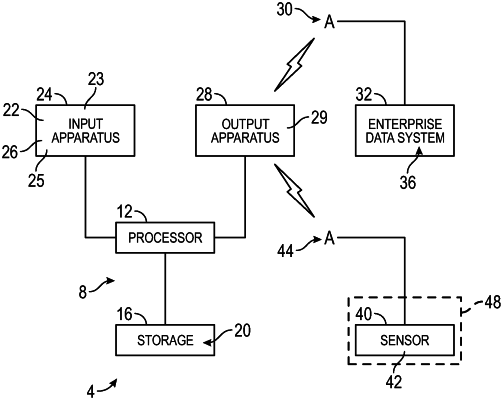| CPC A61B 5/4818 (2013.01) [A61B 5/0205 (2013.01); A61B 5/02405 (2013.01); A61B 5/02416 (2013.01); A61B 5/08 (2013.01); A61B 5/1102 (2013.01); A61B 5/1118 (2013.01); A61B 5/316 (2021.01); A61B 5/318 (2021.01); A61B 5/369 (2021.01); A61B 5/372 (2021.01); A61B 5/383 (2021.01); A61B 5/389 (2021.01); A61B 5/398 (2021.01); A61B 5/4088 (2013.01); A61B 5/4809 (2013.01); A61B 5/4812 (2013.01); A61B 5/4815 (2013.01); A61B 5/4836 (2013.01); A61B 5/6801 (2013.01); A61B 5/6892 (2013.01); A61B 5/6898 (2013.01); A61B 5/7246 (2013.01); A61B 5/7264 (2013.01); A61B 5/7267 (2013.01); A61B 5/7278 (2013.01); G01P 13/00 (2013.01); G16H 10/20 (2018.01); G16H 20/10 (2018.01); G16H 20/30 (2018.01); G16H 40/63 (2018.01); G16H 40/67 (2018.01); G16H 50/20 (2018.01); G16H 50/30 (2018.01); G16H 50/70 (2018.01); A61B 5/024 (2013.01); A61B 5/02438 (2013.01); A61B 5/0816 (2013.01); A61B 5/1103 (2013.01); A61B 5/1123 (2013.01); A61B 5/14552 (2013.01); A61B 5/378 (2021.01); A61B 5/38 (2021.01); A61B 5/6802 (2013.01); A61B 5/6891 (2013.01); G09B 19/00 (2013.01)] | 6 Claims |

|
1. A method of determining a need for sleep disordered breathing therapy for a person, comprising:
with the use of a single wearable electronic device including a PhotoPlethysmoGram (PPG) sensor, a reflectance pulse oximetry (SpO2) sensor, and an actigraphy sensor, determining that the person experiences Excessive Daytime Sleepiness (EDS) by detecting nodding off at non-preferred times by detecting slowing of heart rate and an increase of parasympathetic activation using the PPG sensor followed immediately by detecting abrupt movement using the actigraphy sensor and by detecting an increase in heart rate and an increase of parasympathetic activation using the PPG sensor, and determining that the person experiences Sleep Disordered Breathing Disorder (SDBD) by using a PPG measurement from the PPG sensor to correlate respiratory effort with dips in SpO2 as measured by the SpO2 sensor and arousals from sleep as measured by the actigraphy sensor;
determining a daytime sleepiness score, a nighttime sleep disturbance score, and a severity indicator based at least in part upon the daytime sleepiness score and the nighttime sleep disturbance score including comparing the daytime sleepiness score and the nighttime sleep disturbance score to population values and a stratifying the daytime sleepiness score and the nighttime sleep disturbance score based on age and gender; and
based at least in part upon the severity indicator, outputting a notification that informs the person that they have a need for sleep disordered breathing therapy due to the SDBD, the notification comprising the severity indicator.
|